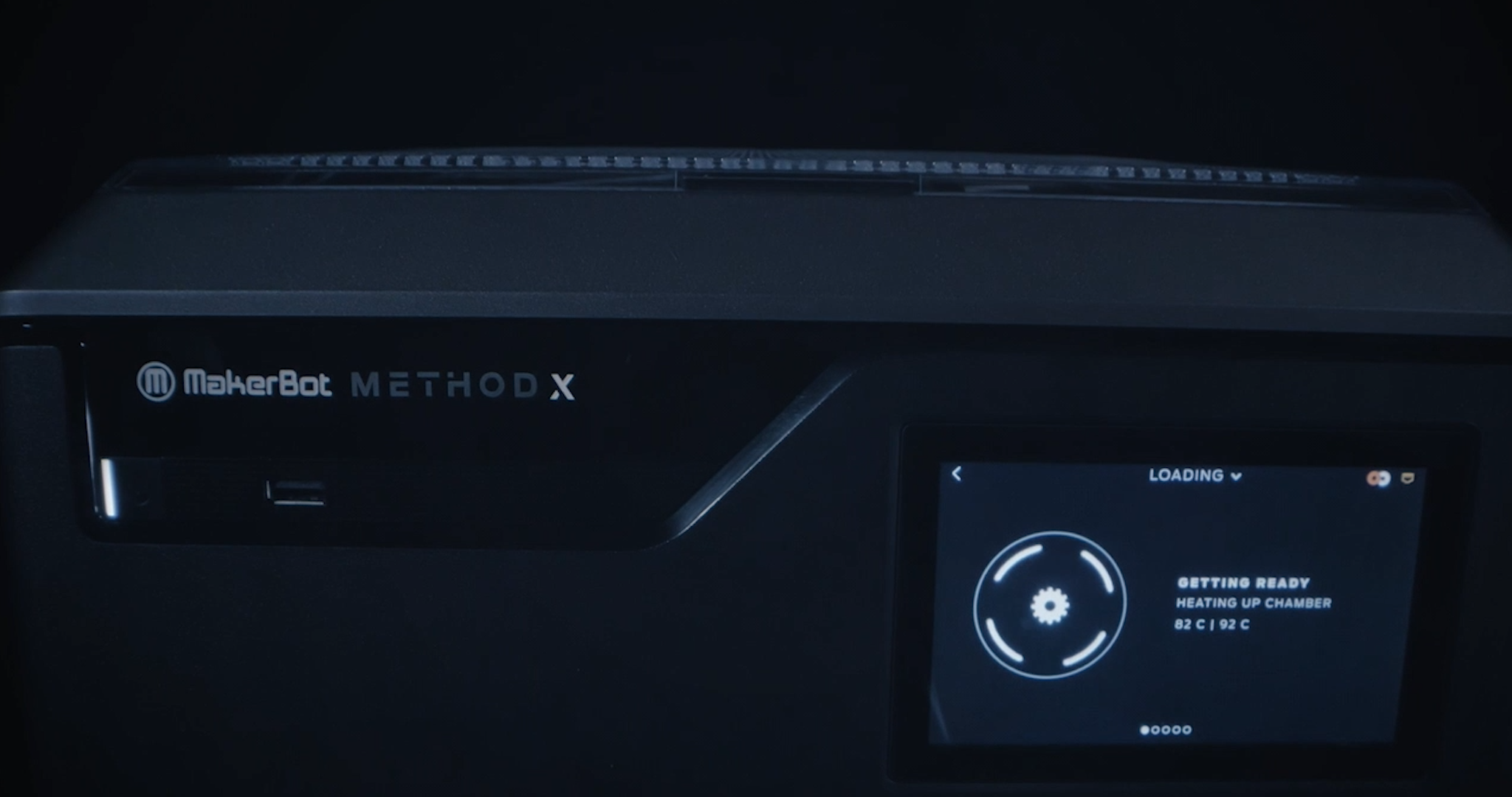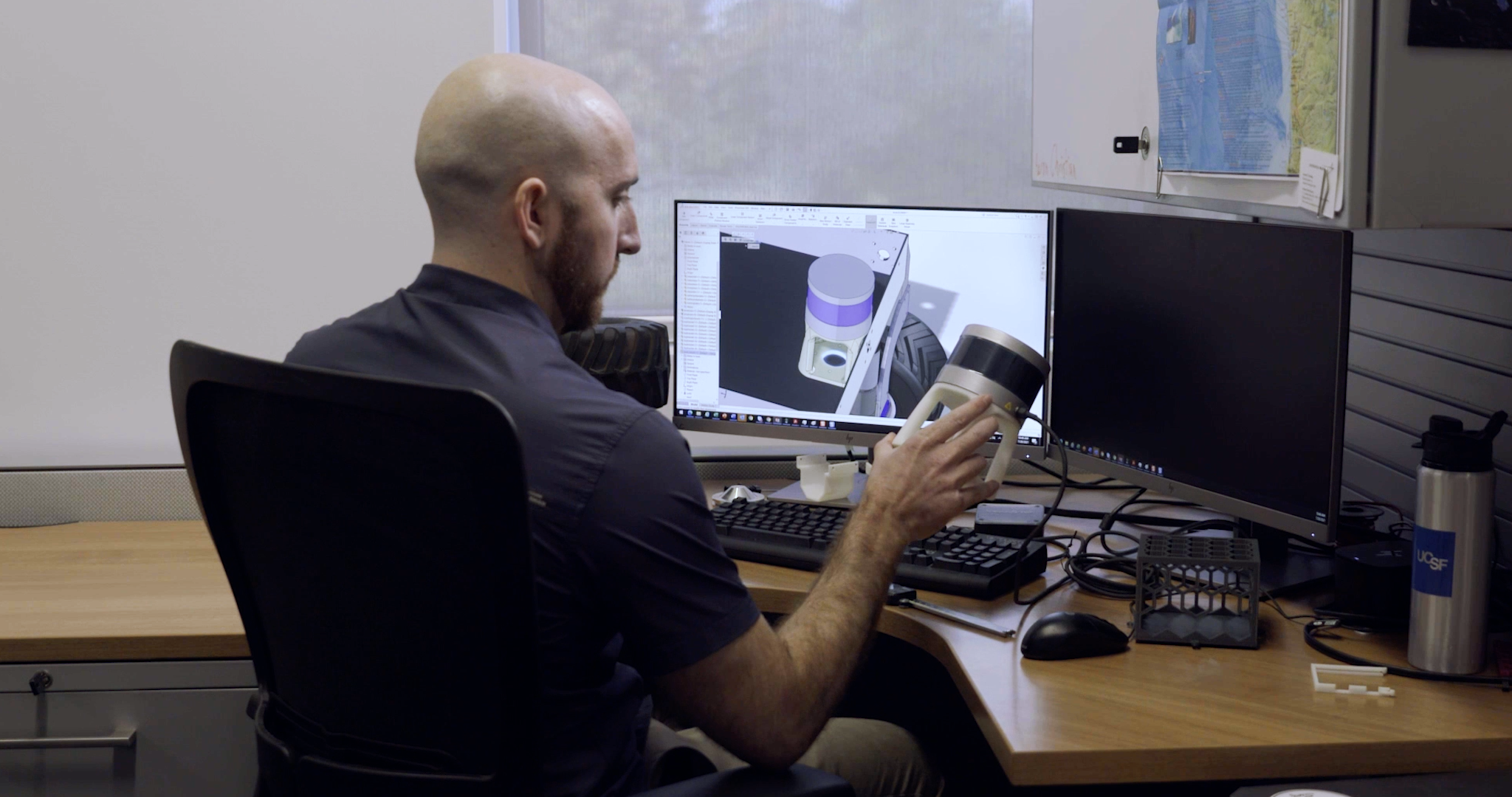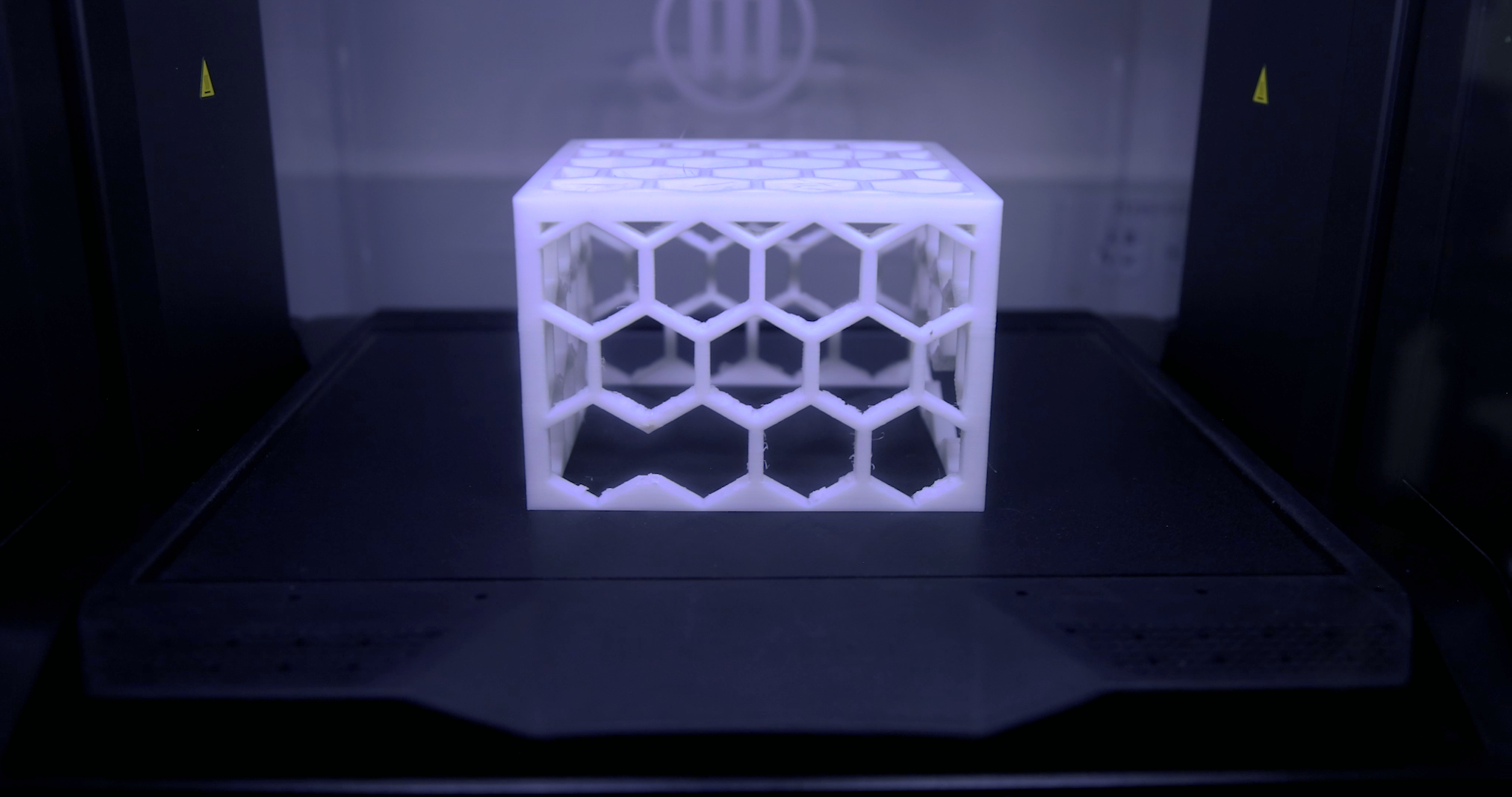Engineers at aerospace giant Lockheed Martin will use MakerBot’s industrial desktop METHOD X printers to create prototypes and proof of concept parts for its upcoming artificial intelligence (AI)-assisted lunar rover. The space vehicle will transport astronauts around the lunar surface, particularly the South Pole, later this decade as part of NASA‘s Artemis program. The announcement comes on the second day of the RAPID + TCT 2021 event in Chicago, where the business showcases its METHOD 3D printing platform up-close.
A Stratasys subsidiary, MakerBot has successfully supported many Lockheed space projects for years. For example, back in 2013, the company used the Replicator 2 and 2X to prototype parts and tooling for the James Webb Space Telescope and later on created prototypes of revolutionary optical designs for a new, futuristic space telescope using MakerBot’s desktop 3D printers. All of this work was done at the company’s state-of-the-art R&D facility known as the Advanced Technology Center (ATC), where several elements of the rover’s autonomy system’s early design and development are being designed, developed, and tested.
The Palo Alto, California site is well-equipped with various cutting-edge technology, including a lab full of 3D printers. ATC’s latest addition to the 3D printing lab is the MakerBot METHOD X 3D printing platform, which the team uses to print parts in nylon carbon fiber and ABS (acrylonitrile butadiene styrene) materials, giving them what MakerBot describes as “the performance they need for accurate testing.”
 The MakerBot METHOD X is the printer of choice at Lockheed’s ATC for projects that require quick and easy prototyping in more robust materials like ABS. Image courtesy of MakerBot.
The MakerBot METHOD X is the printer of choice at Lockheed’s ATC for projects that require quick and easy prototyping in more robust materials like ABS. Image courtesy of MakerBot.Senior Mechanical Engineer at Lockheed Martin Space Aaron Christian said ATC has multiple MakerBot printers that help with quick turnaround times. Moreover, Christian described some of the most significant advantages of the technology and one of the reasons why 3D printing could become a vital asset to organizations in a post-pandemic world.
“I will design a part, print it, and have it in my hand hours later. This allows me to quickly test the 3D printed part, identify weak points, adjust the model, send it back to print overnight, and then have the next iteration in the morning. 3D printing lets me do fast and iterative design, reducing wait times for a part from weeks to hours.”
 Lockheed engineer Aaron Christian compares his 3D printed LIDAR sensor mount with his digital CAD model. Image courtesy of MakerBot.
Lockheed engineer Aaron Christian compares his 3D printed LIDAR sensor mount with his digital CAD model. Image courtesy of MakerBot.Like Lockheed, many aerospace and space manufacturers have increased their investment in 3D printing processes for aircraft, spacecraft, replacement parts, prototyping, tooling, and more. This, however, should come as no surprise, considering that the aerospace and defense industry was one of the earliest adopters of additive technologies and today represents a big chunk of the billion-dollar additive manufacturing sector.
At the ATC, Lockheed engineers are testing a multitude of applications designed for the lunar rover. The leading aerospace company said Christian and his teammates use METHOD X to print several parts for prototyping and proof of concept for the rover project, including embedded systems housing, sensor mounts, and other custom components.
Christian explained that METHOD X can produce “dimensionally tolerant parts right out of the box – and for all sorts of projects, you can print multiple parts that can mate together.” In addition, due to the printer’s heated chamber (100°C), the parts are dimensionally accurate without the variable warping or cracking when printing modified ABS on desktop platforms without heated chambers. Designed as a manufacturing workstation engineered to challenge traditional processes, MakerBot describes the platform as “capable of printing real ABS that can withstand up to 15°C higher temperatures, is up to 26% more rigid, and up to 12% stronger than modified ABS formulations used on desktop 3D printer competitors.”
Lockheed is developing the new fully autonomous lunar rover for NASA’s Artemis program in alliance with General Motors. But driving on the Moon needs an entirely new lunar vehicle concept that can be expertly outfitted to drive over rugged terrain in the dark and cold. Unlike Earth and even Mars, days and nights on the Moon are just under 14 days long, so the Lockheed Martin-GM rovers would be designed to survive and even operate in the two-week-long night that sees temperatures of down to -280 degrees Fahrenheit and daytime temperatures of 260 Fahrenheit. Adding to the extreme temperature swings, the team also needs to account for radiation in space – which is known to be a challenge in terms of systems design – and operate in a vacuum and design systems to withstand the shock of the actual launch.
With so many factors that need to be considered, the team began 3D printing to test parts affordably, iteratively, and modularly. Christian said the group is still at the very early stages of development: “The rover we have at ATC is a testbed that we designed and developed in-house. This affordable modular testbed allows us to make quick changes using 3D printing to alter the design for other applications, whether it be military, search and rescue, nuclear applications, and just extreme environment autonomy needs.”
 Lockheed Martin engineering team prints prototype for the lunar rover with MakerBot Method X. Image courtesy of MakerBot.
Lockheed Martin engineering team prints prototype for the lunar rover with MakerBot Method X. Image courtesy of MakerBot.Many parts are printed in MakerBot ABS and designed to withstand desert heat, UV exposure, moisture, and other environmental conditions. In combination with Stratasys SR-30 soluble supports, parts printed with ABS provide a smoother surface finish than breakaway supports. In addition, MakerBot suggests that printing with dissolvable supports also enables more organic shapes that would have been otherwise impossible to produce through traditional machining.
One of the parts printed for the rover was a mount for a LIDAR, which stands for Light Detection and Ranging and is basically a remote sensor that can help determine the proximity of objects around it. Broadly used in self-driving vehicles, Lockheed employs LIDAR in a lot of its autonomy projects. According to the company, the mount was designed to sit on the rover, so it was printed in ABS, which allows it to handle more extreme conditions than typical PLA. The mount lets engineers swap out the LIDAR with different sensors, such as a stereo camera, directional antenna, or a rangefinder. Besides, it has a complex organic shape, which can be difficult to achieve via traditional machining. The mount also has a lot of access to ensure proper airflow to keep the part cool and temperature-regulated on the robots.
 Alyssa Ruiz inspects an electronics housing 3D printed on METHOD X in the ATC’s 3D printing lab. Image courtesy of MakerBot.
Alyssa Ruiz inspects an electronics housing 3D printed on METHOD X in the ATC’s 3D printing lab. Image courtesy of MakerBot.In addition to printing prototypes, Lockheed uses additive manufacturing for production parts that will go into various space-going platforms. While commenting on the space projects, Christian even went a bit further, envisioning a future where 3D printing will be used for in-situ assembly in space. Eventually, that would be a huge opportunity for the 3D printing industry and the space economy, especially once Artemis crewed missions get to orbit if they are ready by 2024 (although the date will probably be delayed).
Manufacturing in space is expensive but appealing for future applications and missions, reducing costs by cutting out the need for storage and multiple trips, making it expensive to fly. For now, however, this announcement reinforces the MakerBot system’s core attributes and the idea that 3D printing is a great ally for spacecraft developments.
Subscribe to Our Email Newsletter
Stay up-to-date on all the latest news from the 3D printing industry and receive information and offers from third party vendors.
You May Also Like
HP & INDO-MIM Collaborate to Boost Metal 3D Printing in India
HP Inc. and INDO-MIM, a US- and India-based supplier of metal injection molding (MIM) powders and contract manufacturer, have announced that the two companies will collaborate to accelerate additive manufacturing...
New Report: Semiconductor Industry to See $1.4B in 3D Printing Revenues by 2032
“The semiconductor sector has become the most strategically significant area of global industry.” Truer words are hard to come by when it comes to the modern world, and they are...
One of US’s Largest Machine Tool Resellers to Offer Stratasys 3D Printing
In a key move for the additive manufacturing (AM) stalwart, Stratasys (Nasdaq: SSYS) has announced a strategic partnership with Select Additive Technologies, a division of Morris Group, Inc., which is...
3D Printing Unpeeled: Orbex Investment, IndoMIM and HP, Ultrasonic Waves
INDO-MIM has bought three HP Metal Jet S100 printers, operating two in India and one in Texas. This is a win for HP because the company has deep experience in...





























